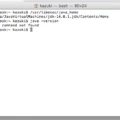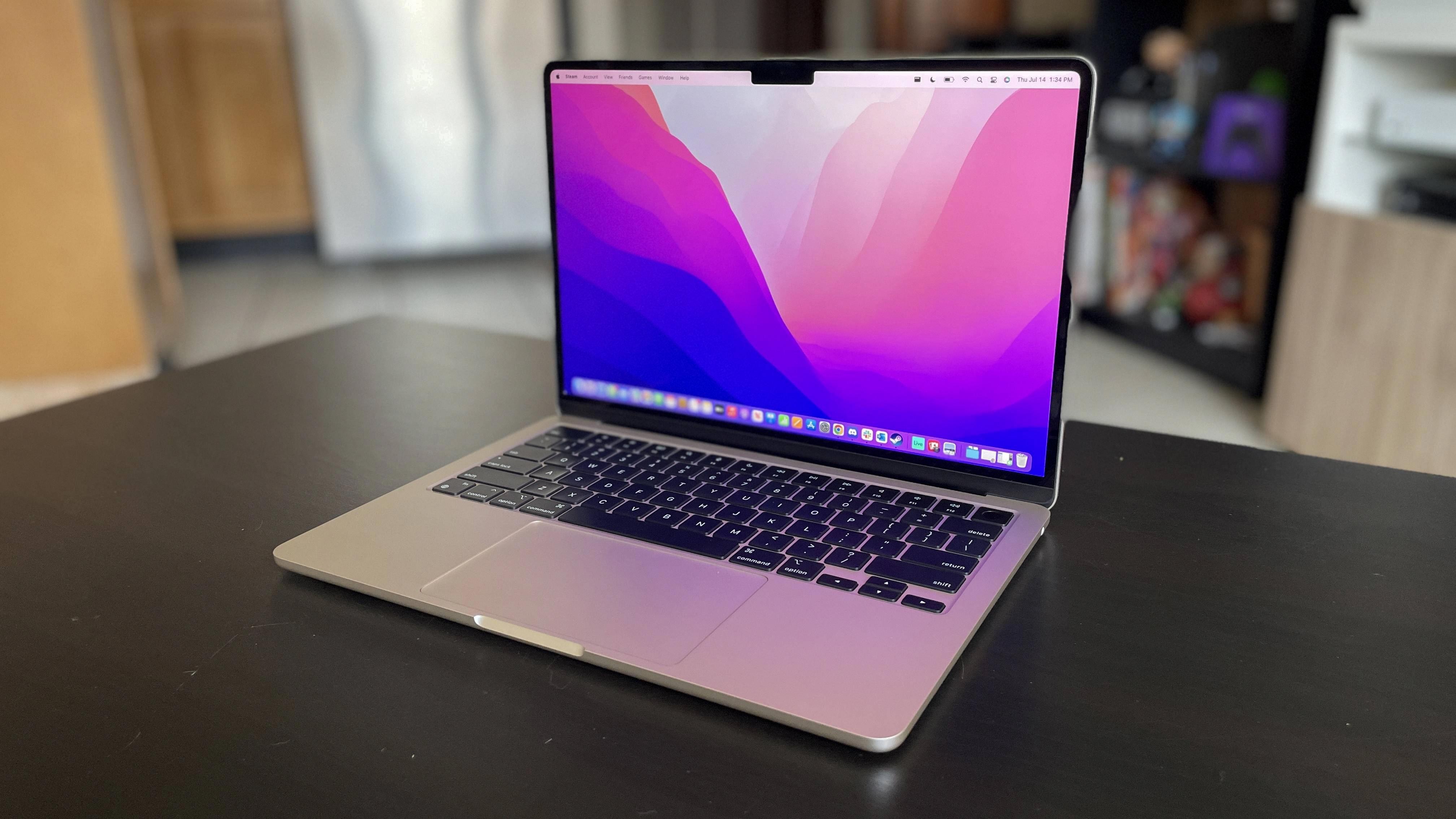If you need to restart your Mac remotely, it is possible to do so with a few simple steps. Whether you are a system administrator or just a user who needs to access your work computer from home, this guide will show you how to quickly and easily restart your Mac remotely.
First, you will need to enable Remote Login on the Mac that needs to be restarted. To do this, open System Preferences and select the Sharing pane. Check the box next to Remote Login and click “Allow Access for All Users” if desired. This will allow other computers on the same network or over the internet to connect and control your Mac.
Next, you will need to find out the IP address of the remote Mac that needs to be restarted. You can do this by opening Terminal on your local computer and running the command “ifconfig”. This will display all of the network interfaces along with their associated IP addresses.
Once you have found out the IP address of the remote Mac, you can then use an SSH client such as PuTTY (www.putty.org) or a similar program to log into it using its IP address as well as any username and password credentials used for login access on that machine.
Once logged in, type in “sudo shutdown -r now” at the command prompt and hit Enter on your keyboard. This command will immediately restart the remote machine without any further input required from you. If you would like instead schedule a restart at a specific time in advance, simply type “sudo shutdown -r +n” instead with n representing the number of minutes before it restarts; for example sudo shutdown -r +5 would reboot after 5 minutes have elapsed since typing this command into Terminal.
Finally, if you are unable to use SSH or PuTTY for whatever reason, another option is Microsoft’s Windows Remote Desktop Protocol (RDP). You can access RDP by using either Microsoft’s own Remote Desktop Connection client software or third-party programs such as TeamViewer (www.teamviewer.com). With either software installed on both your local computer and remote one respectively, simply connect using credentials provided by Microsoft when prompted; once connected simply run “shutdown -r -m \\MachineName -t -01” at its command prompt which should automatically shut down or restart depending on what switches were chosen beforehand without any further input required from either user afterward either way!
Overall, restarting a Mac remotely is relatively straightforward when following these few steps outlined above involving enabling Remote Login first before finding out its IP address via Terminal followed by connecting through an SSH client such as PuTTY or RDP with credentials provided by Microsoft afterward before finally executing appropriate commands afterward depending on whether an immediate reboot was requested or scheduled later on instead!

Remotely Restarting a Mac
Yes, you can restart your Mac remotely. To do so, you need to open a terminal window and type in the command ‘sudo shutdown -r now’. This will immediately start the process of shutting down and restarting your remote Mac. Alternatively, if you want to schedule a restart for a specific time, you can use the command ‘sudo shutdown -r +n’, where ‘n’ represents the number of minutes after which your Mac will be restarted.
Restarting a Computer Remotely
Restarting a computer remotely can be done in a few simple steps. First, make sure you have the proper permissions to access the remote computer. Then, open up a command prompt on your local machine. Type in “shutdown -r -m \\MachineName -t -01” followed by Enter on your keyboard. This will send a signal to the remote computer to restart itself. The “-t” switch sets the timer for how long it will wait before restarting, and the number after that specifies how many seconds it should wait. If you don’t specify a time limit, it will default to 30 seconds. Once the command is sent, you should see the remote computer begin to restart itself shortly thereafter.
Restarting a Mac From Terminal
To restart your Mac from the Terminal, you can use either the shutdown or systemsetup commands.
For the shutdown command, you can type: “sudo shutdown -r now” to restart your computer immediately. Alternatively, you can specify a time in place of ‘now’ to schedule a restart for a later time. For example, typing “sudo shutdown -r 18:00” will restart your computer at 6 PM.
For the systemsetup command, you can type: “sudo systemsetup -setrestartfreeze on” to enable automatic restarts ater any system freeze. To disable automatic restarts, type: “sudo systemsetup -setrestartfreeze off”.
It is important to note that these commands require administrative privileges and will require your password before they are executed.
Restarting a Mac Without the Restart Button
To restart your Mac without using the restart button, press and hold down the Command (?) and Control (Ctrl) keys along with the power button (or the ? Touch ID? / Eject button, depending on the Mac model). Keep holding these keys until the screen goes blank and the machine restarts.
Restarting a Mac Without the Power Button
If your Mac is frozen and you don’t have access to the power button, there are still ways to force a restart. First, try pressing Command + Control + Power button. This should bring up an option to restart the computer. If this doesn’t work, press down on the Touch ID button (located at the right side of the touch bar) until the device reboots. Finally, if none of these methods work, you can unplug your Mac from its power source and wait for at least 15 seconds before plugging it back in. This should force a restart and get your Mac back up and running again.
Restarting a Computer Remotely Using an IP Address
To restart your computer remotely with its IP address, you will first need to enable remote access on your computer. On Windows machines, this can be done by going to System Properties > Remote Settings. Once remote access is enabled, you can open the command prompt and type in “shutdown –r –t 0 [remotecomputerIP]” without the brackets. This command will remotely restart your computer, with the IP address of [remotecomputerIP] replaced by either your network name or the IP address of the computer. If you prefer a hybrid shutdown, which is a shutdown followed by a fast start-up, then use “shutdown –hybrid –s –t 0 [remotecomputerIP]” instead. You should note that these commands require permission from an administrator on the network, so if you are not an administrator you may be unable to execute them successfully.
Restarting Using Command Prompt
To restart your computer using Command Prompt, open Command Prompt by typing “cmd” into the Start menu search box. Once it is open, type in the command “shutdown /r” and press enter. This will initiate a restart of your computer. You may be prompted to confirm the action with a “Y” or “N” before it actually restarts. It is important to note that this will not work if you are logged into a user account without administrative privileges; you must log in as an administrator in order to use this command. After entering the command, your computer will begin the restart process and should boot up normally after a few minutes.
Restarting a Computer Without Pressing the Power Button
If you want to restart your device without pressing the power button, then you can do so by entering recovery mode. To enter recovery mode, simply plug in your USB cable and keep holding down the volume down/volume up button until the menus appear. Once the menus are visible, simply tap exit and your device will automatically reboot. This process may vary depending on what Android version and manufacturer you have.
Can Remotely Turning On and Off Computers Be Done?
Yes! You can remotely turn a computer on and off using a feature called Wake-on-LAN. This technology allows you to wake up your computer from anywhere in the world, as long as it’s connected to the same network. All you need is the computer’s MAC address and a special software or app that will send the magic packet. Once activated, your computer will power up and be ready for use. Additionally, if you have a remote desktop tool like Chrome Remote Desktop, you can also turn off your computer from anywhere with just one click.
Can Remote Factory Reset Be Done?
Yes, you can use Android Device Manager to remotely lock your device, erase everything on it, or change the lock screen passcode. You will need to activate the device administrator to enable this feature. To do so, go to Settings > Security > Device Administrators and select the box next to “Allow remote lock and factory reset.” When the “Activate device administrator” screen appears, read the text and touch Activate. Once enabled, you can then use Android Device Manager to reset your device remotely.
Restarting a Frozen Mac
If your Mac is frozen and won’t respond to any of your commands, the first step is to restart it. To do this, press and hold the power button on your Mac for up to 10 seconds, until your Mac turns off. On laptop computers that have Touch ID, press and hold the Touch ID button. Once your Mac has shut down, turn it back on by pressing the power button again. Your Mac should now start up as normal.
Forcing a Mac Restart Using Keys
To force restart your Mac using keyboard shortcuts, press and hold the Control, Command, and Power buttons simultaneously. Your Mac will immediately start to restart without prompting you to save any open and unsaved documents. Be aware that this will not give you the chance to save any unsaved changes in your documents, so use it with caution.
Restarting a Frozen Mac
If your Mac is stuck or frozen, you can try restarting it by pressing and holding the power button for up to 10 seconds until your Mac turns off. Once your Mac is off, you can turn it back on again. If the issue persists and your Mac still isn’t responding, press and hold the power button until it turns off again. Then try turning your Mac back on one more time. If you’re still having trouble getting your Mac to start up, you may need to contact Apple Support for further assistance.
Conclusion
In conclusion, restarting a Mac remotely can be accomplished using the sudo shutdown -r command or the systemsetup command. Both commands allow you to reboot your Mac from another computer or device connected to the same network. For example, you could use the sudo shutdown -r command with an optional time parameter to set a timer for when the Mac will restart. Or, you can use the systemsetup command and specify a particular machine on your network that you want to reboot or shut down. With either of these two commands, you’ll be able to conveniently and securely remotely manage your Mac’s power functions.








